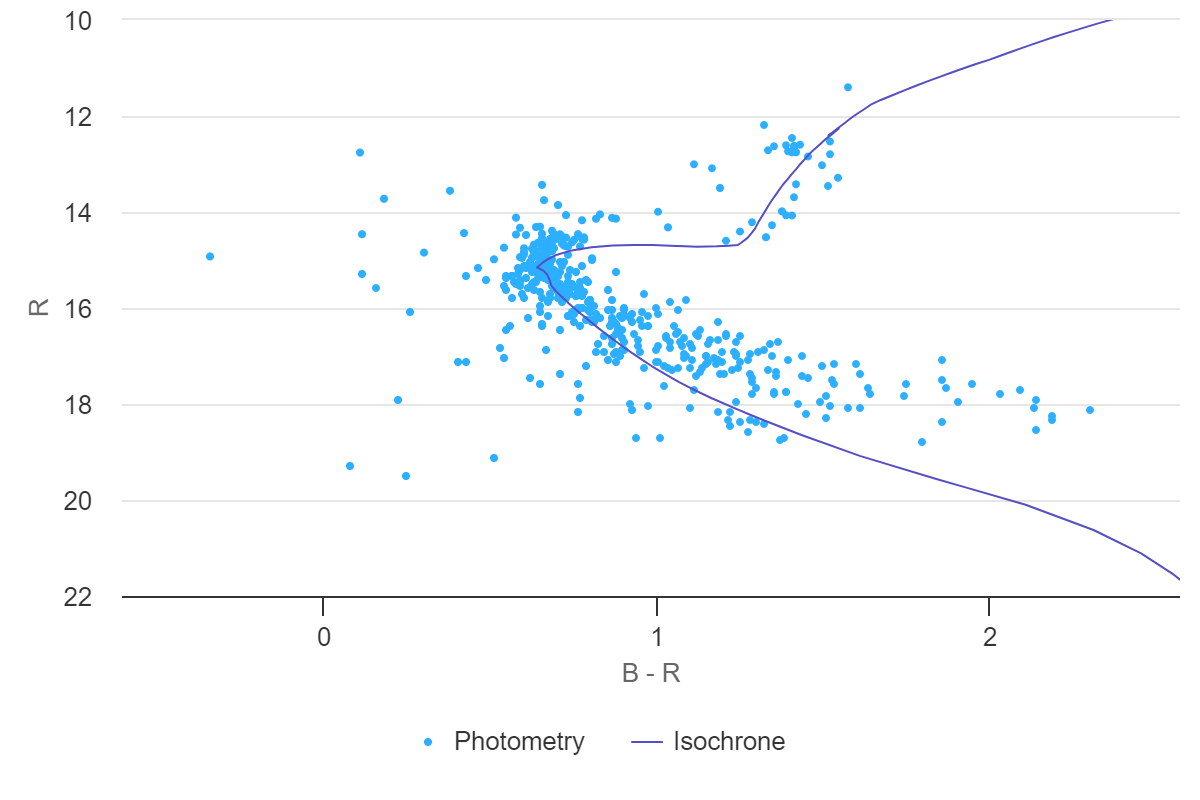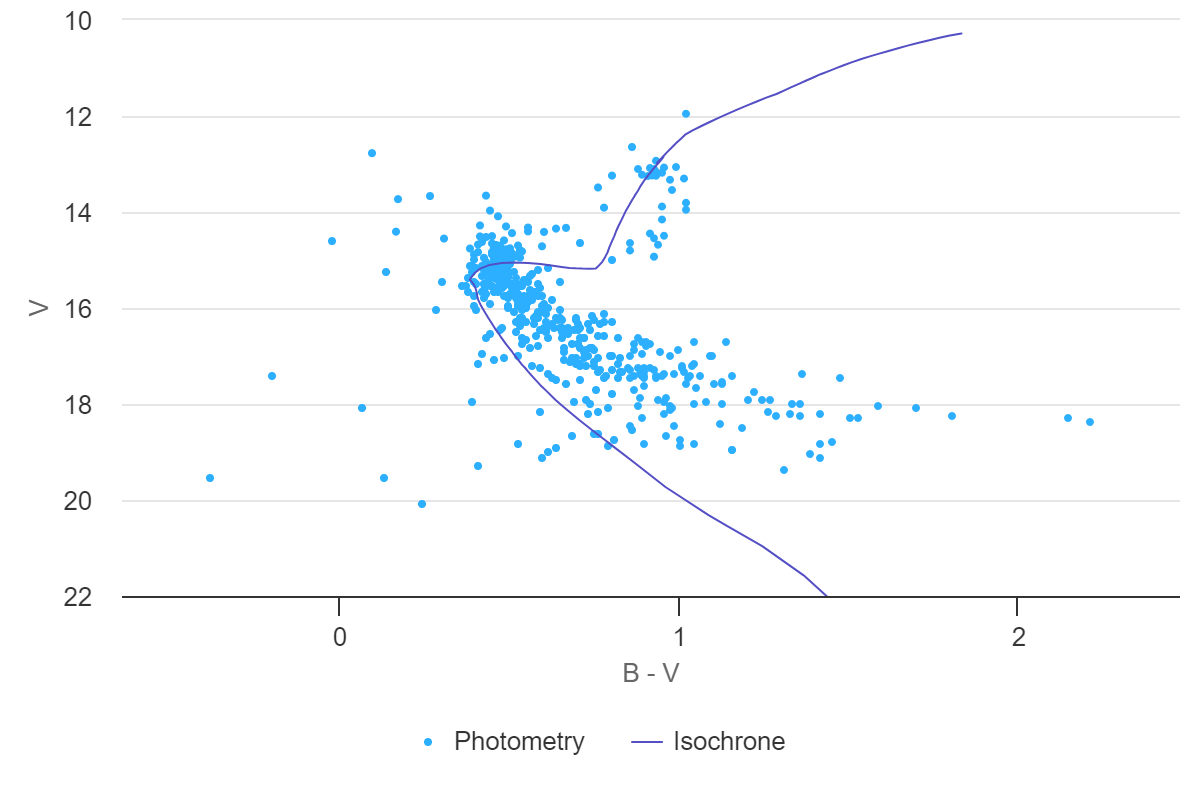NGC 2506, also known as Caldwell 54, is an intermediate-age open cluster nestled in the equatorial constellation of Monoceros. It was discovered by the famed astronomer William Herschel in 1791, and it has been captivating the curiosity of astronomers ever since. Currently it is believed to be at a distance of approximately 12.7 kiloparsecs from the Sun, near the Galactic anti-center. This cluster presents a unique opportunity to study the dynamics and evolution of stars in a relatively undisturbed environment.

In a recent study, Anju Panthi et al (2022) and her team at the Birla Institute of Technology and Science in Pilani, India, delved deeper into the mysteries of NGC 2506. Utilizing multi-wavelength observations from the UltraViolet Imaging Telescope (UVIT) onboard AstroSat and advanced neural networks for classification, they conducted a comprehensive analysis of the cluster’s stellar populations. The research uncovered 2,175 cluster members, including nine blue straggler stars (BSS), three yellow straggler stars (YSS), and three red clump (RC) stars, providing valuable insights into the cluster’s evolutionary history and the various stellar processes at play.
In a fascinating development, a paper by Xinhua Gao et al (2020) also unveiled the discovery of tidal tails around NGC 2506, shedding light on the dynamic processes at play in this ancient open cluster. Tidal tails are elongated streams of stars that extend from a cluster due to the gravitational forces exerted by the Milky Way’s tidal field. Gao’s research, based on data from Gaia-DR2, revealed that NGC 2506 is surrounded by 2301 stars, 147 of which are likely extra-tidal stars forming two well-defined tidal tails. These tails stretch out to at least 54 parsecs, nearly three times the cluster’s tidal radius, indicating that NGC 2506 is experiencing significant mass loss, estimated at about 5.3 solar masses per million years. The wide mass spectrum of the extra-tidal stars suggests that additional dynamical processes, such as disk-shocking, may be contributing to the formation of these features alongside mass segregation and the evaporation of low-mass stars. This discovery adds a new dimension to our understanding of the cluster’s evolution and its interaction with the galactic environment.
In order to study NGC 2506 myself and investigate the relationships between the colours, brightnesses, and the age and chemical composition of the cluster as a whole, I collected 15 total images, 5 images each for B, V, and R filters with the PROMPT-MO-1, Prompt5, and Prompt6 SkyNet telescopes, with exposure durations of 96.77, 48.39 and 32.26 seconds in these filters in that order using Skynet.
By analyzing findings from these images in Afterglow and Astromancer, and creating various isochrone model graphs in this process, I was able to discern patterns and relationships between the properties of the cluster. Notably, my BP-RP vs. RP Isochrone Model Graph revealed eight blue stragglers and three red giants, aligning closely with the findings of Panthi et al.




The analysis also yielded the following parameters for NGC 2506:
| Proper Motion RA | Proper Motion DEC | Distance | Log(Age) | Age | Metallicity | E(B – V) |
| -2.55 | 3.96 | 2.85 kiloparsecs | 9.55 | ~3.55 billion years | -0.8 | 0.11 |
This cluster was also studied by Kharchenko et al (2013), who found the following parameters:
| Distance | Log(Age) | Age | Metallicity | E(B – V) |
| 3.53 kiloparsecs | 9.21 | ~1.62 billion years | -0.2 | 0.042 |
These values yield the following BP-RP vs. RP isochrone graph:

With newer datasets like GAIA being in place, you’ll notice this older isochrone model appears to be a less accurate fit.
Personally, I believe there is still much work to be done in terms of analysis of NGC 2506. I experienced considerable difficulty in determining good ranges for proper motion boundaries during cluster analysis in Astromancer. This would make sense if there were a significant number of stars that were kinematically associated with the cluster but were located outside expected boundaries, further suggesting the presence of tidal tails or extra-tidal stars as discovered by Gao et al. Further analysis with this in mind may yield more accurate results.
These results provide a deeper understanding of the cluster’s dynamics and its place in the broader cosmic tapestry. Ultimately, my metaphorical journey through the stars of NGC 2506 has been an incredible learning experience that has contributed to my appreciation for the wonders of our universe.